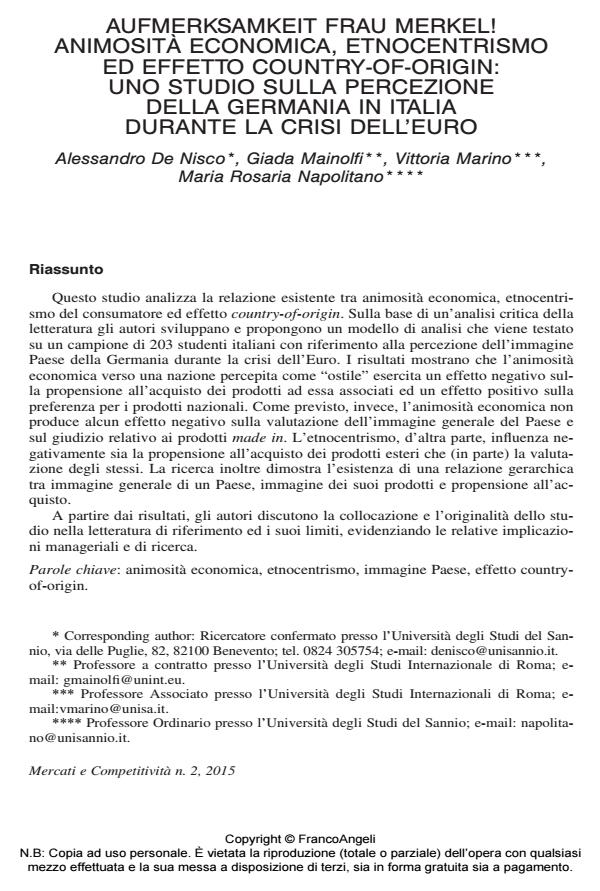Aufmerksamkeit Frau Merkel! Economic animosity, ethnocentrism and country-oforigin effect: a study on the perception of Germany in Italy during the Euro crisis
Journal title MERCATI & COMPETITIVITÀ
Author/s Alessandro De Nisco, Giada Mainolfi, Vittoria Marino, Maria Rosaria Napolitano
Publishing Year 2015 Issue 2015/2
Language Italian Pages 24 P. 87-110 File size 768 KB
DOI 10.3280/MC2015-002006
DOI is like a bar code for intellectual property: to have more infomation
click here
Below, you can see the article first page
If you want to buy this article in PDF format, you can do it, following the instructions to buy download credits

FrancoAngeli is member of Publishers International Linking Association, Inc (PILA), a not-for-profit association which run the CrossRef service enabling links to and from online scholarly content.
The main purpose of this study is to analyze the relationship between economic animosity, consumer ethnocentrism and general country image and their impact on product beliefs and product receptivity towards a foreign country. On the basis of a critical literature review the authors propose a research model and a set of hypotheses to link the latent constructs. The proposed model has been tested with a survey on a sample of 203 Italian students with regard to the image of Germany during the Euro crisis. Results show that consumer animosity towards a foreign country has a positive impact on consumer ethnocentrism and a negative impact on product receptivity. As expected, no relationship has been found between consumer animosity, general country image and product beliefs. Consumer ethnocentrism, instead, exerts a negative affect on both product receptivity and (partially) on product beliefs. Moreover, the study demonstrates the existence of a hierarchical relationship between general country image, product beliefs and product receptivity. On the basis of results, the authors discuss the originality of the study, its limitations and the related implications for research and management.
Keywords: Economic animosity, consumer ethnocentrism, country image, country-oforigin effect.
Alessandro De Nisco, Giada Mainolfi, Vittoria Marino, Maria Rosaria Napolitano, Aufmerksamkeit Frau Merkel! Animosità economica, etnocentrismo ed effetto country-of-origin: uno studio sulla percezione della Germania in Italia durante la crisi dell’euro in "MERCATI & COMPETITIVITÀ" 2/2015, pp 87-110, DOI: 10.3280/MC2015-002006